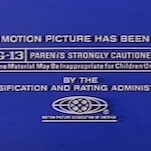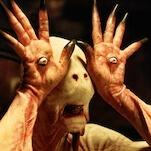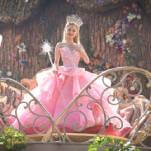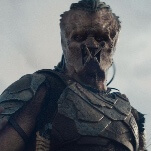Mark Of The Ninja was originally released in the dog days of the Xbox Live Arcade, Microsoft’s download-only marketplace that helped kickstart
the great indie game boom of the late ’00s. By 2012, though, XBLA had become stuffed with low-rent titles, and the diamonds were increasingly hard to find in the rough.
Mark Of The Ninja’s Cartoon Network art style and ninja-action premise didn’t exactly set it apart, but a few seconds playing it did. Despite superficially looking like a
Ninja Gaiden redux, your character in
Mark moves at a refreshingly light canter, sticking quickly to cover and lithely padding across the ceiling. Despite those responsive controls, the game encourages players to approach its sprawling levels slowly, teasing apart enemy patterns and moving like a whisper into air ducts and elevator shafts. And it conveys mountains of information via sharp visual flourishes, like the circles that radiate outward from anything that makes noise, or the way its cones of vision portray only what each character knows is there.
These first impressions—the tiny catlike leaps your character makes, the elegance of its user interface—are the earliest evidence of an uncommon depth of thought that pervades Mark’s design. It’s paced like a dream, scaling up from a slight tutorial through a series of structural infiltrations that only grow broader and more conceptually daring as the game goes on. The result is a corrective not only to the prevailing way ninjas are presented in games, but also to stealth games in general. You’re not some fragile mortal, waiting interminably for a guard to turn their back, but rather a silent agent of efficiency, unlocking the clockwork levels through thrown darts and slit throats. It’s as if the Arkham series of Batman games had the courage to build themselves fully around their stealth elements, rather than treating sneaking as just one diversion amid a banquet of open-world activities.
Mark Of The Ninja was recently re-released on the Switch, and it’s worth revisiting—or perhaps just playing for the first time—in part because of this invigorating iconoclasm, and in part to brush up on its designer’s back catalog. It was the last game Klei Entertainment made in this style, following 2010’s Shank, which similarly repurposed Genndy Tartakovsky line-work into a blood-spattered retro throwback. In the years since then, the Canadian studio has refused to stand still, releasing a pair of survival games (including the still-massively popular Don’t Starve), and the smart, tautly designed hacking rogue-lite Invisible, Inc. Its next game, theoretically still due out sometime this year, is a painterly sci-fi role-playing game called Griftlands about pirate economics (?), which promises to be yet another abrupt shift. For my money, Invisible, Inc. is still its best game, but Mark Of The Ninja remains an essential early example of the Klei style, its unabashed cartooniness masking an almost Nintendo-like cohesion between audio-visual surface and mechanical depth. Few stealth games before or since have felt as quiet—or as deadly.







































